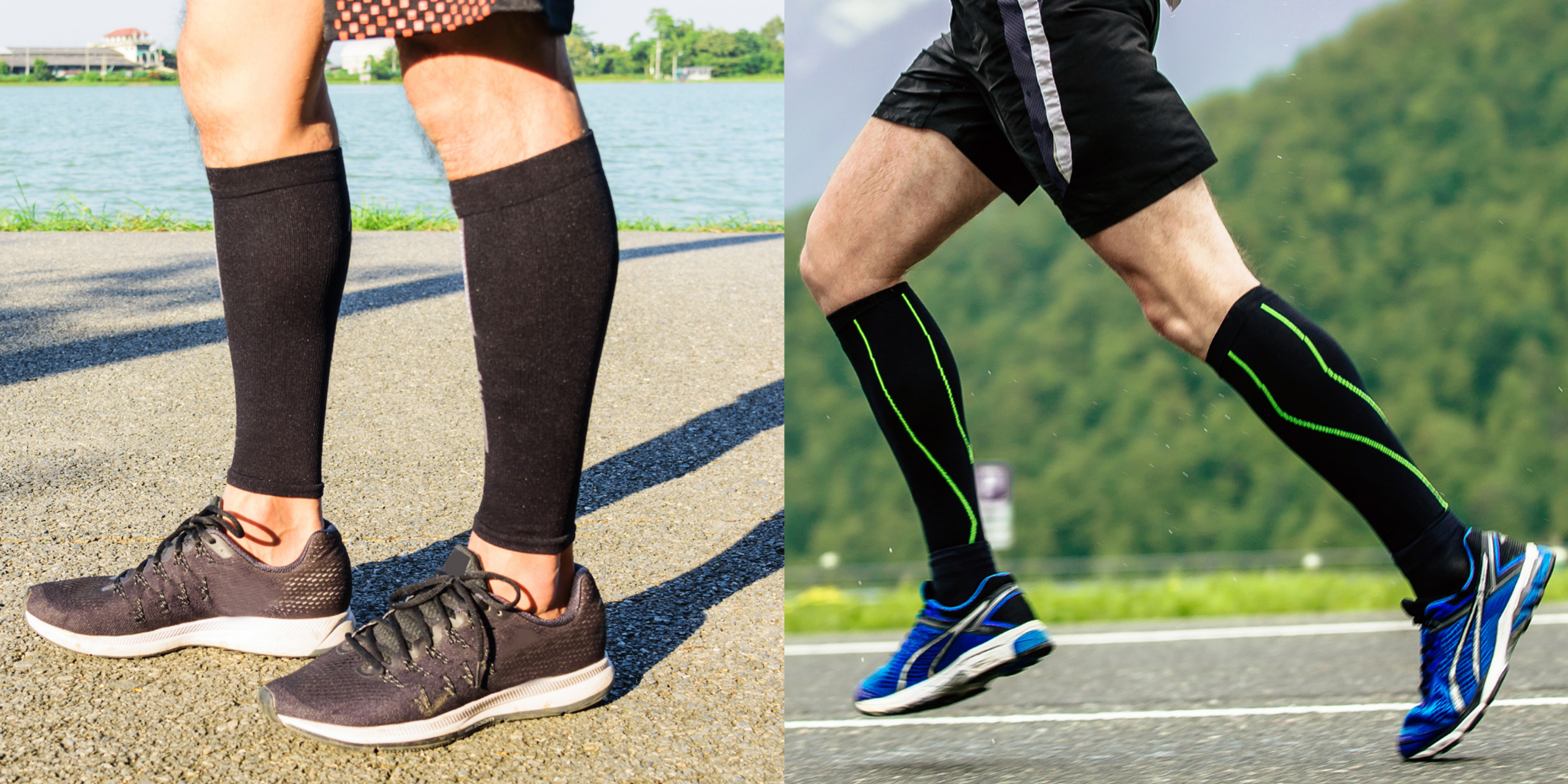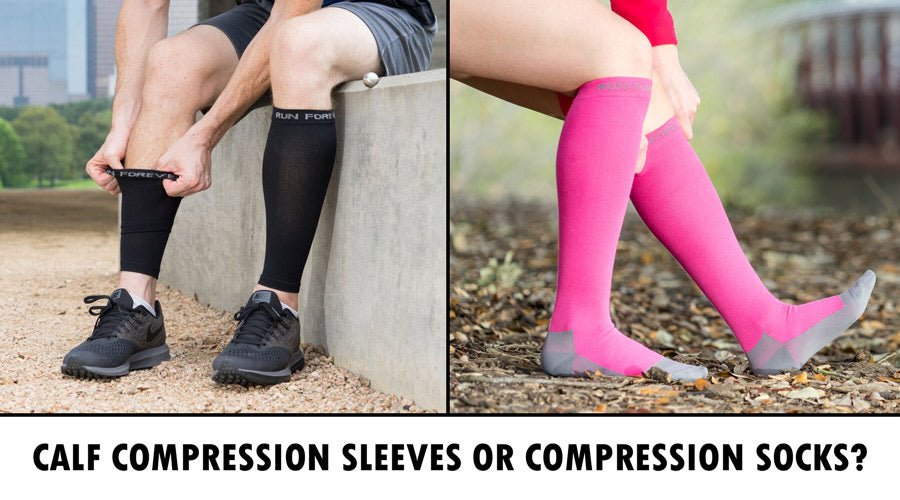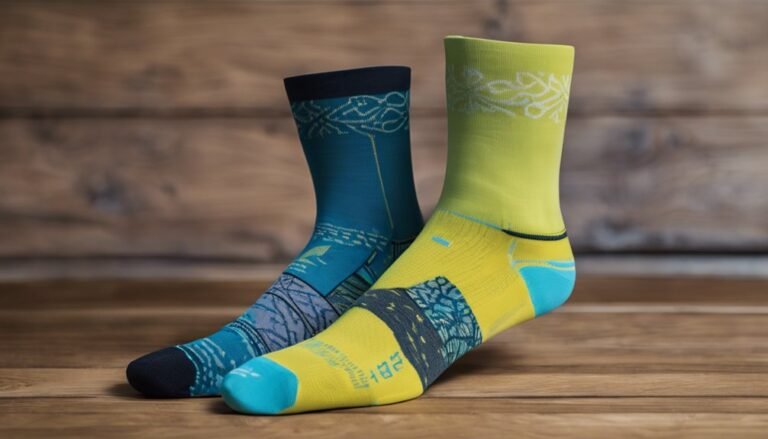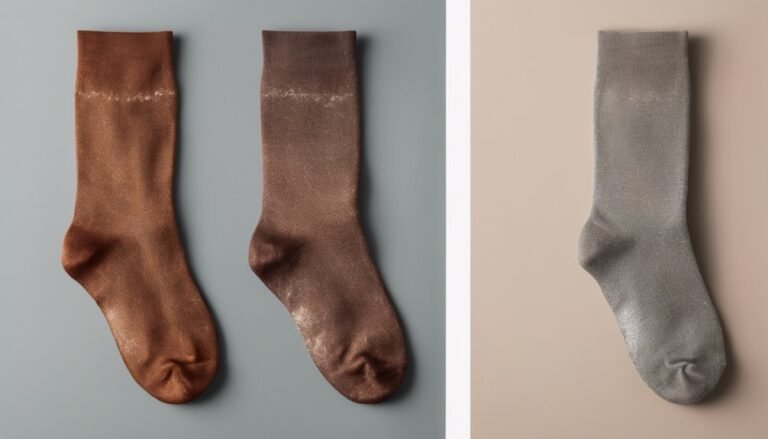Compression Sleeves Vs Compression Socks: Which is Better?
Compression sleeves and compression socks both offer support. They help improve blood flow and reduce swelling.
But how do you choose the right one? Choosing between compression sleeves and compression socks can be tricky. Both serve similar purposes but have their unique advantages. Compression sleeves are often preferred by athletes for targeted muscle support. On the other hand, compression socks are widely used to prevent blood clots and swelling in the legs.
Understanding the differences can help you make an informed decision. This comparison will help you decide which option best suits your needs, whether you’re an athlete or someone looking for better leg health. Let’s dive into the key features and benefits of both.
Compression Sleeves
Compression sleeves are designed to fit snugly around your arms or legs. They are popular among athletes and individuals with poor circulation. They offer many benefits without covering the entire limb.
Design And Fit
Compression sleeves come in various sizes and materials. They are typically made from a blend of spandex and nylon. The stretchy fabric ensures a tight fit. Graduated compression is common, meaning tighter at the bottom and looser at the top. This design helps improve blood flow.
Key Benefits
- Improved Circulation: Compression sleeves promote better blood flow. This helps reduce swelling and fatigue.
- Muscle Support: They provide extra support to your muscles. This can help prevent injuries during exercise.
- Versatility: You can wear them during various activities. This includes running, cycling, or even daily tasks.
- Breathability: Many sleeves are made with breathable materials. This keeps you comfortable and dry.
- Ease of Use: They are easy to put on and take off. This makes them convenient for quick changes.
Compression sleeves offer a mix of support and comfort. They are ideal for those needing localized compression.

Compression Socks
Compression socks are popular among athletes, travelers, and those with specific medical conditions. They offer various benefits, including improved circulation and reduced swelling. These socks are designed to provide consistent pressure on the legs, enhancing blood flow and reducing discomfort.
Design And Fit
Compression socks come in different lengths, from ankle to knee-high. They are made from stretchy materials that ensure a snug fit. The tightness of the sock is graduated, meaning it is tighter at the ankle and looser as it moves up the leg. This design helps push blood back towards the heart.
Different sizes are available to ensure proper fit. It’s important to choose the right size for maximum effectiveness. Some brands offer socks with added features like reinforced toes and heels for extra durability.
Key Benefits
Compression socks improve blood flow. They help reduce swelling in the legs and feet. This can be particularly helpful for people who stand or sit for long periods.
These socks can also help prevent varicose veins. Athletes use them to enhance performance and speed up recovery. They are also useful for travelers on long flights, reducing the risk of deep vein thrombosis.
Medical professionals often recommend them for conditions like diabetes and lymphedema. They are easy to wear and can be used daily without discomfort.
Material And Durability
When choosing between compression sleeves and compression socks, understanding the materials and their durability is essential. This can affect comfort, longevity, and performance. Let’s explore the common materials used and how to care for these items to ensure they last.
Common Materials
Both compression sleeves and socks are made from similar materials. These include:
- Nylon: Known for its strength and elasticity.
- Spandex: Offers great stretch and recovery.
- Polyester: Durable and quick-drying.
- Cotton: Soft and breathable, used in blends.
The blend of these materials determines the feel and performance of the product. For instance, a higher spandex content offers more elasticity. Nylon provides durability, while polyester ensures quick moisture wicking.
Longevity And Care
The lifespan of compression sleeves and socks depends on proper care. Follow these tips:
- Wash them in cold water.
- Use a gentle detergent.
- Avoid fabric softeners and bleach.
- Air dry them; avoid direct sunlight.
Proper washing and drying maintain elasticity and fit. Here’s a quick comparison table:
| Material | Benefits | Care Tips |
|---|---|---|
| Nylon | Strong, Elastic | Cold wash, Air dry |
| Spandex | Stretchable, Comfortable | Avoid bleach, Gentle wash |
| Polyester | Durable, Quick-drying | Avoid softeners, Air dry |
| Cotton | Soft, Breathable | Cold wash, Avoid heat |
By following these care tips, you can extend the life of your compression sleeves and socks. This ensures you get the most out of your investment.
Performance Comparison
Compression sleeves and compression socks both offer benefits for athletes. But how do they compare in terms of performance? Let’s break it down to see which one might suit your needs better.
Athletic Performance
Compression sleeves are often favored by runners and cyclists. They provide targeted support to the calves and shins. This helps reduce muscle vibration and fatigue during intense activities. Sleeves also allow for more freedom around the foot and ankle. This can be beneficial for sports requiring quick foot movements.
Compression socks, on the other hand, cover the entire leg. They offer consistent compression from the foot to the knee. This can enhance overall blood flow and oxygen delivery to the muscles. Many athletes report feeling less tired and more energized with compression socks. The full coverage can also provide additional warmth in cooler conditions.
Recovery And Healing
Compression sleeves are excellent for post-workout recovery. They help reduce swelling and muscle soreness. You can wear them for extended periods without discomfort. This makes them a popular choice for recovery after long runs or rides.
Compression socks shine in the recovery department as well. They are particularly effective for preventing deep vein thrombosis (DVT). The full-leg compression helps improve circulation and reduce inflammation. Many athletes wear them during long flights or after intense training sessions. This aids in quicker recovery and less muscle stiffness.
Medical And Health Benefits
Compression sleeves and compression socks offer many medical and health benefits. They both aid in improving circulation and reducing swelling. Deciding between them can depend on your specific needs. Let’s dive into the details of their benefits.
Circulation Improvement
Both compression sleeves and compression socks improve blood flow. They apply gentle pressure to your limbs. This pressure helps blood travel back to your heart. Better circulation means your muscles get more oxygen. This can reduce muscle fatigue and cramps.
Compression socks cover the entire foot and leg. This makes them great for those who need full leg support. They are often used by people who stand or sit for long periods. Compression sleeves, on the other hand, cover only the calf or arm. They are useful for targeted support, especially during workouts.
Swelling Reduction
Swelling, or edema, can be uncomfortable and even painful. Compression gear can help manage this condition. Compression socks help reduce swelling in the feet and lower legs. They are often recommended for pregnant women and those with circulatory issues.
Compression sleeves also help with swelling but in specific areas. For instance, arm sleeves are used to reduce swelling post-surgery or due to lymphedema. Calf sleeves are ideal for athletes who experience swelling after intense activity.
In summary, both compression sleeves and socks offer valuable health benefits. Choose based on your needs and comfort. Whether improving circulation or reducing swelling, they are effective tools for better health.

Choosing The Right Product
Choosing between compression sleeves and compression socks can be challenging. Both serve different purposes and offer unique benefits. To make the best choice, consider your individual needs and the type of activity you engage in.
Individual Needs
Consider your specific needs when selecting between compression sleeves and socks. Here are some factors to keep in mind:
- Medical Conditions: People with specific medical conditions like varicose veins or diabetes might benefit more from compression socks.
- Swelling Issues: If you experience swelling in your feet, socks provide better coverage.
- Targeted Support: For targeted support to muscles, sleeves might be more effective.
Activity Type
The type of activity you do also influences your choice. Different activities require different levels of support and comfort:
| Activity | Recommended Product |
|---|---|
| Running | Compression sleeves |
| Cycling | Compression sleeves |
| Standing for long periods | Compression socks |
| Traveling | Compression socks |
Compression sleeves are ideal for activities needing calf support. They allow more freedom of movement. Socks are better for activities requiring full-leg support and improved circulation.

Frequently Asked Questions
Do Compression Sleeves Work As Good As Compression Socks?
Compression sleeves and socks both enhance blood flow. Socks cover the foot and ankle, offering more comprehensive support.
What Are The Downsides Of Compression Sleeves?
Compression sleeves can cause skin irritation, discomfort, or restricted blood flow if too tight. They may also lead to overheating.
When To Use Compression Sleeves?
Use compression sleeves during exercise, recovery, long flights, or when standing for extended periods. They improve blood flow and reduce muscle soreness.
What Is The Difference Between Compression Socks And Compression Calf Sleeves?
Compression socks cover the entire foot and calf, providing full leg support. Compression calf sleeves only cover the calf.
Conclusion
Choosing between compression sleeves and compression socks depends on your needs. Both provide great support and boost blood circulation. Compression sleeves work well for specific leg areas. Compression socks cover the entire leg, offering more comprehensive support. Consider your activity level, comfort, and health goals.
Consult a doctor if unsure which to pick. Both options can improve performance and recovery. Evaluate your needs and choose wisely. Stay healthy and active with the right compression gear.







